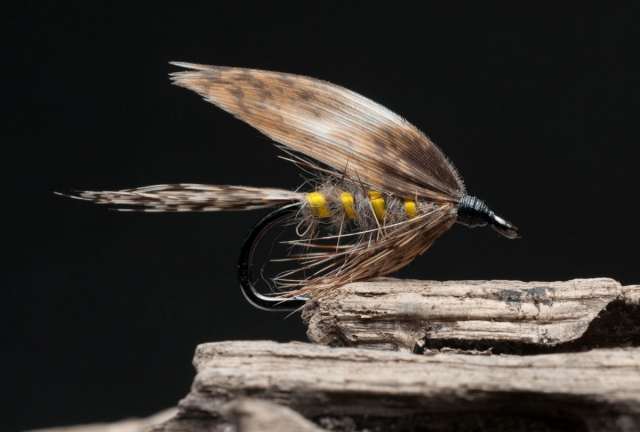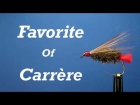Book review: Tying Glass Bead Flies
If you are like me, when glass beads came upon the fly tying scene a few years ago, you passed them by. Or, if you did anything with glass beads, it was to add a iridescent bead to the body of caddis emerger patterns. After a few outings the flies got pushed into a forgotten corner of the fly box and the beads got lost in the fly tying materials storage boxes. After a few articles in the fly fishing periodicals, the few published glass bead patterns seemingly disappeared.
With the publication of Joe J. Warren's book on tying with glass beads this has all changed. Now the innovative fly tyer has a cornerstone work to use in his pursuit of better flies using this modern form of an old material, glass beads. More particularly, "seed" and "pebble" beads. These beads range in size from approximately 1/16" to 5mm OD beads. Surprisingly, these beads fit on hooks from size 28 to over 1/0 and are strong enough for use in all forms of fly fishing if properly mounted on the hook.
The book is well organized into chapters on Materials, Single Bead Flies, Bead-Body Flies, Dressed Bead-Body Flies, Extended Bead-Body Flies, Imitations of Naturals, Searching Flies, Flies for Anadromous Fish, and Saltwater Flies. Each chapter dealing with a type of bead fly starts with overview of that particular style of fly and then gives explicit tying instructions of several patterns utilizing the particular style. The instructions include both well written text and excellent step-by-step photographs.
The chapters on Imitations of the Naturals provides pictures and recipes for 81 different Mayflies, Stoneflies, Caddisflies, Midges, Mosquitoes, Craneflies, Damelflies, Dragonflies, Crustaceans, Worms, Leeches, Terrestrials, and Fish Spawn. The chapter on Searching Flies provides pictures and recipes for 9 attractor patterns and 21 streamers. There are 51 patterns with pictures in the Anadromous Fish Flies chapter, and 20 saltwater patterns. Many of these are glass bead adaptations of well known and standard patterns, and many are new patterns developed for glass beads.
The book is hardbound with a spiral binding so that it may be laid flat on the tying table for easy reference. The photography is generally very good, though there are some sections which have photographs with busy backgrounds and strange lighting. Some of the full page photographs were clearly amateur snap shots, but overall the photography is very well done. The art work by Lee Clarke is exceptionally well done. And the book includes a color chart of beads showing a wide range of colors, and finishes, which will be most helpful and welcome to a fly tyer just getting started in using glass beads for fly tying.
Joe's writing style is clear, concise and his enthusiasm for the subject comes through clearly. He has not only brought excitement to glass bead fly tying, he has brought the original work of a good number of glass bead fly tyers to the forefront.
Overall, a book full of fly tying fun well worth adding to any fly tying library.
Read more about why you should register.
More content from the front page
Since you got this far …
… I have a small favor to ask.
Long story short
Support the Global FlyFisher through several different channels, including PayPal.
Long story longer
The Global FlyFisher has been online since the mid-90's and has been free to access for everybody since day one – and will stay free for as long as I run it.
But that doesn't mean that it's free to run.
It costs money to drive a large site like this.
See more details about what you can do to help in this blog post.






















































Comments
J Look at
J
Look at abe-books.com, it's often the best adress. You'll find it there, but pretty expensive.
Jan
janw
J, A fly-fishing
J,
A fly-fishing book from 1997...? I'd be plenty surprised! Your best bet is Amazon with its Kindle format, I think, and they only have used physical copies. I don't think Frank Amato, the publisher, does e-books at all. They are reprinting the physical book, which is due out in July 2012.
Martin
Is this book availab
Is this book available in ebook format? Thank you